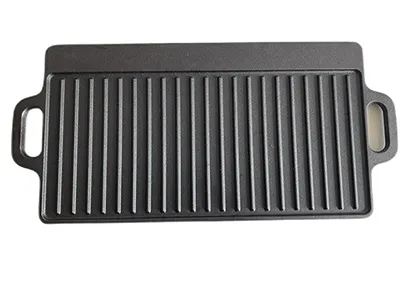
dutch oven on gas stove
Cooking with a Dutch Oven on a Gas Stove Tips and Techniques
The Dutch oven is a timeless kitchen tool cherished by both amateur cooks and professional chefs alike. Known for its versatility, durability, and capacity to retain heat, this heavy-duty pot can take your cooking to the next level when used on a gas stove. Whether you're simmering, braising, baking, or frying, a Dutch oven can deliver perfect results. Here’s a guide to making the most of your Dutch oven on a gas stove.
Understanding the Dutch Oven
A Dutch oven is typically made of cast iron, with some models featuring an enamel coating. This traditional cookware is designed to endure high temperatures and is perfect for slow-cooking, which makes it ideal for stews, soups, and casseroles. The thickness of the pot allows for even heat distribution, preventing hot spots that can lead to uneven cooking.
Choosing the Right Dutch Oven
When selecting a Dutch oven, consider size and material. A 5 to 7-quart pot is ideal for most family recipes, while larger models can accommodate bigger batches, a whole turkey, or even a large loaf of bread. The enamel-coated versions are easier to clean and come in a variety of colors, while bare cast iron requires seasoning but can achieve superior high-heat cooking results.
Preparing Your Gas Stove
Using a Dutch oven on a gas stove is simple and effective. Gas burners offer immediate heat control, allowing you to regulate the temperature quickly as necessary. Before you start, ensure that your gas stove is clean and that the burners are functioning properly. A stable and clean cooking surface will provide the best results for your Dutch oven dishes.
Cooking Techniques
dutch oven on gas stove

1. Searing Start by preheating your Dutch oven on medium-high heat. Add a small amount of oil, and once it's shimmering, introduce your meat or vegetables. Searing develops deep flavors and caramelization, enhancing the overall taste of your dishes.
2. Braising After searing your ingredients, lower the heat and add your braising liquid (such as broth, wine, or sauce). Cover the pot with a lid, allowing the food to cook slowly and absorb the flavors. The Dutch oven's heavy lid helps retain moisture, making it perfect for this technique.
3. Simmering For soups and stews, bring your ingredients to a boil, then reduce the heat to a gentle simmer. The Dutch oven’s thermal properties keep the temperature steady, eliminating the need for constant stirring. Simmering allows flavors to meld beautifully over time.
4. Baking Did you know that you can bake bread or even casseroles in a Dutch oven? Preheat your Dutch oven with your gas stove and use it like a convection oven. The heavy lid traps steam, creating a crusty exterior on bread while keeping it moist inside.
5. Frying You can also use your Dutch oven for frying, as its depth allows for frying without splatter. Heat oil on medium-high heat, and when it reaches the right temperature, gently place your food in the pot. The cast iron retains heat well, ensuring a consistent frying process.
Maintenance and Care
After you’ve enjoyed your delicious meal, it’s essential to clean and maintain your Dutch oven properly. If it is bare cast iron, avoid soap; instead, rinse it with hot water and scrub it gently with a brush. Dry it immediately to prevent rust, and apply a thin layer of oil for seasoning. For enameled Dutch ovens, it’s safe to use mild soap and a non-abrasive sponge.
Conclusion
Cooking with a Dutch oven on a gas stove combines the best of both worlds the versatility of the pot and the responsive heat of gas burners. From hearty stews to artisanal bread, the deep flavors and perfect textures achieved through a Dutch oven are unmatched. Embrace the techniques and tips outlined above to explore an exciting range of culinary possibilities. Your gas stove and Dutch oven can transform any kitchen into a haven of delicious meals. Happy cooking!
-
Season Cast Iron Perfectly with GPT-4 Turbo TipsNewsAug.01,2025
-
High Quality Cast Iron Cookware - Baixiang County Zhongda MachineryNewsAug.01,2025
-
Premium Cast Iron Pan: Durable & Perfect HeatNewsAug.01,2025
-
High Quality Kitchen Durable Black Round Cast Iron Cookware Pancake Crepe Pan-Baixiang County Zhongda Machinery Manufacturing Co., Ltd.NewsAug.01,2025
-
Cast Iron Cookware - Baixiang County Zhongda Machinery | Nonstick, Heat ResistanceNewsAug.01,2025
-
High Quality Kitchen Durable Black Round Cast Iron Cookware - Baixiang County Zhongda Machinery | Non-Stick, Heat Retention, DurableNewsJul.31,2025


